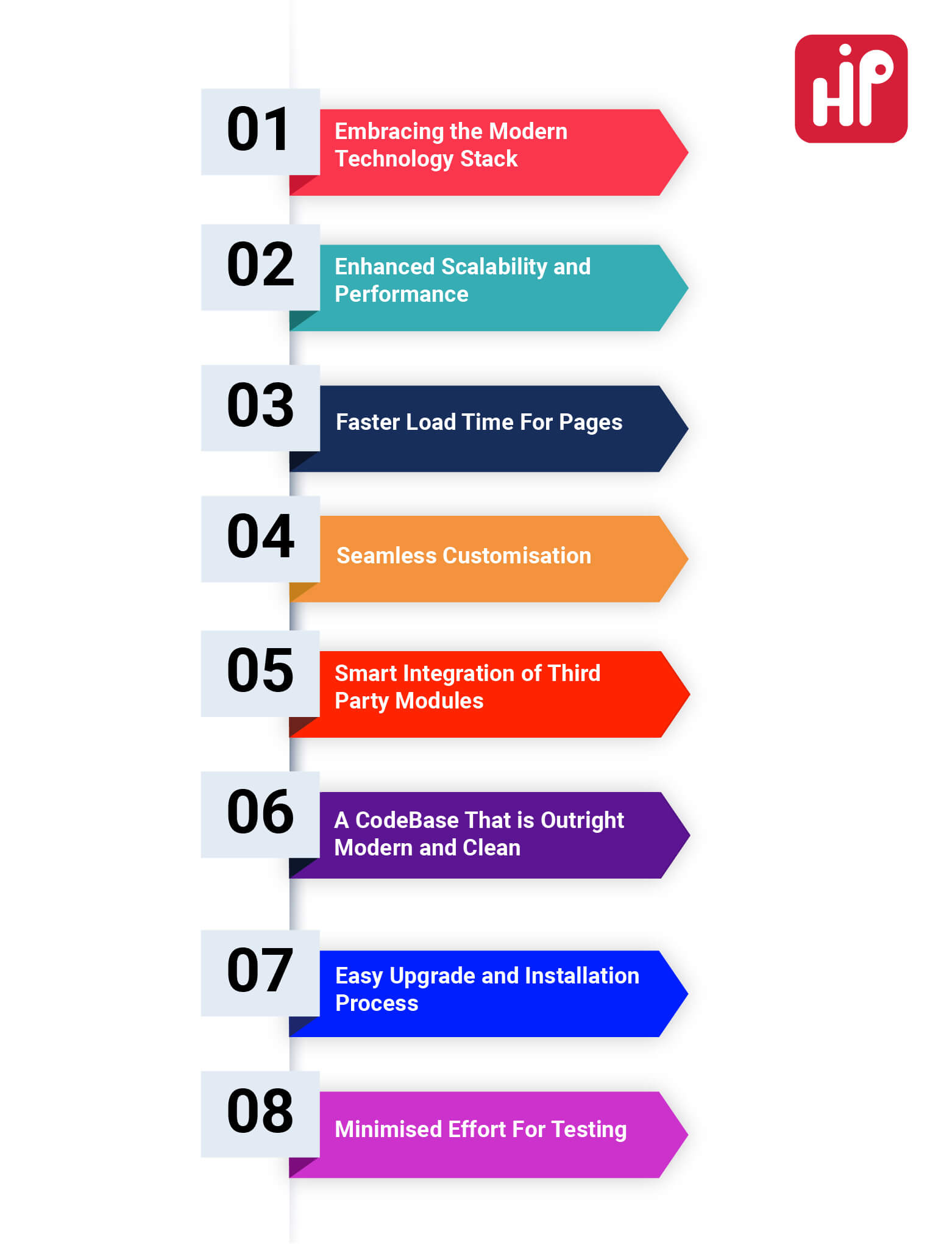Ecommerce platforms have had a proud history of evolution. With smarter technologies ruling the roost, businesses are fast embracing new changes to enhance customer experience.
Magento – one of the leading eCommerce platforms, is certainly no different. The developers followed the known suit leading to the unveiling of Magento 2.
But, hang on! Does a new release imply everyone’s happy onboard?
Well, yes, and no!
There are several eCommerce clients who are still running their online shops on the previous version and are yet to make the shift. Frankly, it’s quite a dilemma, as a lot of e-commerce businesses are still in the dark as to whether they should consider an upgrade, and with no holds barred for official Magento 1 support already done and over with in June, Magento 2 platform here seems to be in the spotlight.
Reportedly, in the second quarter of 2020, more than 30,000 online stores with no less than 27000 unique domain names saw themselves go live on Magento 2. The stats further depict:
- 5.29% of Magento 2 store users are Shopping and Ecommerce businesses, whereas Lifestyle brands take the lead by 9.34% and another 5.76% by Home and Garden brands.
- There are more than 75,000 websites in the US alone running on Magento and is said to be the highest in the world followed by the UK with more than 15,000 sites and Germany with more than 13000 sites.
- Magento is also downloaded almost close to 5,000 times each day, thus accounting for its popularity among e-retailers.
The official marketing lingo for Magento 2 goes– ‘brands, retailers, and businesses across B2C and B2B industries to quickly and cost-effectively deliver engaging omnichannel shopping experiences.”
Evidently, one of the plus points of the latest version Magento 2 is its flexible architecture and enhanced performance. Take the inclusion of touch-friendly features for instance– definitely, a rewarding move allowing eCommerce store owners to track and manage their businesses from underneath their palms, via a smartphone.
Nevertheless, the transition from Magento 1 to Magento 2 can appear a tad bit complex for most users. Sure, there are external tools to help you, but knowing things by yourself, and for the most part, why upgrading Magento 1 store is necessary, offers a clear perspective.
This post discusses a handful of compelling reasons Magento 2 migration that will not only do away with your confusion with Magento 2 but happily encourage you to upgrade this platform by hiring the best Magento developers.
Read on to find out more about the Magento migration process.
8 Reasons to Migrate Your Current Ecommerce Store to Magento 2

1. Embracing the Modern Technology Stack
With an open-source Magento 2 store, you get to witness an upgraded tech sack. For instance, PHP 5.5 is the version that receives the minimum support, whereas MySQL 5.6, HTML5, CSS3 are now what is being looked at as standard.
Plus, Magento 2 is built to easily facilitate optimal viewing as well as easy effortless interactions and improved performance across multiple device types– a much-needed feature that was missing in its earlier version.
The web API’s in Magento 2 also allow one to connect their eCommerce store with a bunch of advanced payment methods, merchandising solutions, and a host of marketing capabilities.
2. Enhanced Scalability and Performance
Undeniably, the built-in full page cache is the singular most significant feature of Magento 2, and it is this full page cache that offers support for varnish as the back end.
The upgraded Magento version now allows for faster load time for pages, like products and categories, and to be precise is measured to be less than 1.5 seconds for a better user experience.
On the compatibility front, Magento 2.0 supports Varnish 4 as well as HHVM 3.6 which in turn makes it possible to compile all PHP codes on the go.
Furthermore, Magento 2 is way faster in general than Magento 1 owing to a truckload of front-end doings that can be pre-compiled and worked AJAX. Now, you will be able to share databases by functional area, which means your product information can be stored on a different server altogether, and thus any information can be retrieved a lot faster for one and all users.
In essence, it has also contributed to a faster and seamless checkout process which invariably adds to the scalability of your eCommerce platform.
3. Faster Load Time For Pages
While Magento 1 required tons of JS to load in order to build a single eCommerce page, Magento 2 has significantly lowered the same to save time and load pages faster.
Enhanced Javascript management, especially the movement from using a prototype JS to JQuery has made things run a lot smoother. Last, the developers have also included JavaScript Bundling contributing to lower page load time.
4. Seamless Customisation
Magento 2 has a restricted code base that functions to direct everything under a specific module right under and within a single module. Plus, it employs the de facto PHP package manager and Composer to help manage the module installation process.
And that’s not all. The logic for business, as well as presentation, has also been worked on separately, thus making it possible to maintain all customization efforts, despite the product patches installed.
5. Smart Integration of Third Party Modules
All well-defined APIs have been published by Magento 2 marketplace to effortlessly act as an interface for all third-party modules. Doing so has also made it possible to keep external modules unaffected by any significant code changes and vice versa. In essence, the whole structure has contributed towards the enhancement and customization of the modules like never before.
6. A CodeBase That is Outright Modern and Clean
Magento 2 has successfully removed all bad and legacy codes. Thus, in Magento 2, there seems to be no easy way to leave any code that’s non-optimized in the right place for all Magento sites.
7. Easy Upgrade and Installation Process
One of the most compelling reasons for migrating from Magento 1 to 2 has to be its easy upgradability as well as installation process, especially for the patches.
As an eCommerce merchant, it greatly benefits one as they are now seamlessly upgrading their store to the best platform that’s available, only to enjoy all the latest functionalities and features under one umbrella.
With easy installation of security patches too, it has greatly contributed to the security of the site.
8. Minimised Effort For Testing
Magento 2 is a hallmark of come-of-age, automated test strategies. What it means is how developers now have the scope to write several test cases ensuring the customizations implemented have not played foul with any core functionalities.
Moreover, the Magento Test Framework also allows for functional testing, since it is an open-source cross-platform offering. In other words, it is not dependent on a single OS to run things and allows one to run quick functional tests using the native Magento application itself.
Furthermore, all functional tests can be performed at any point in time, either independently or with multiple tests at one go. Thus, it has brought the effects of user interaction testing to a bare minimum.
The Leap Ahead
Undeniably, the expansion of the eCommerce business and its constantly evolving nature has made Magento see some bad days in the recent past.
Notwithstanding the fact that Magento was once the top-seeded player out there for content management systems, the arrival of WooCommerce, SquareSpace, Shopify, and Wix have changed the game for good.
Nevertheless, Magento has been doing well and has always managed to keep the scorecard going with a pretty impressive list of users signing up. Sure, the figures can change for some years, but that certainly has nothing to do with the credibility of a platform like Magento. With its newest upgrade, things are looking very promising and it won’t be a surprise if you see a large number of users making a comeback with Magento 2.
Following Adobe’s acquisition in 2018, Magento as an innovation company has constantly made an effort to revive its lost glory by enhancing the core features, upping the security, and engaging eCommerce retailers globally through conventions and gala events. With Magento 2 in the picture, perhaps the company is due for a glory tale in times to come.
As an eCommerce business owner running your store on Magento 1, no time can be better than right now to consider an upgrade. Now that you’ve got a comprehensive idea about what you can expect from Magento 2, you can plan accordingly to implement new features and probability shape up your business plan as well.
However, while considering upgrading to Magento 2, it is recommended in the best interest that you always get it done from a certified Magento Solution Partner, or from a Magento Certified Developer to avoid any hassles. With trained hands by your side, the intricate doings and other inherent capacities can be handled easily and you won’t have to lose your sleep over it.

